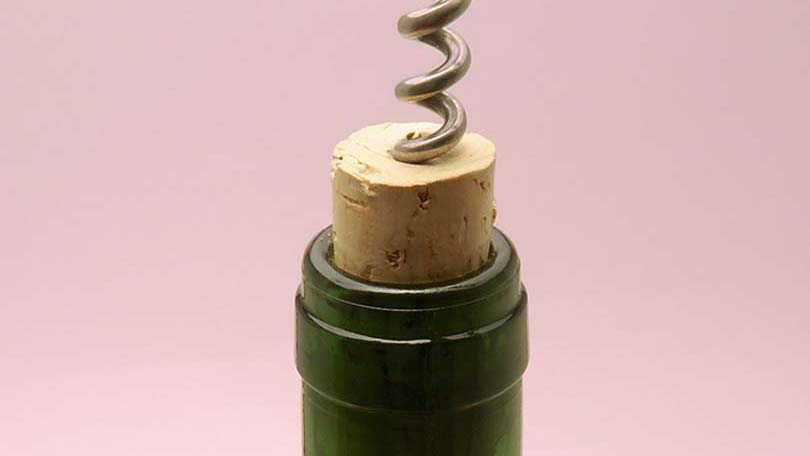
You’re at a wine-tasting party. The host brings out an expensive-looking bottle of 1997 PlumpJack Cabernet Sauvignon. But wait….where is the corkscrew? As you watch in total disbelief, the host actually grabs the cap and twists it off…..aaaaauuuuugghh! What kind of cruel joke is this? Caps only come on cheap wines best suited for embalming fluid, right? Well… not exactly.
A lot of people have pondered the question ‘Capped vs. Corked Wine; Is There A Difference?’. One of the reason caps came in to being is a phenomenon called Cork-Taint Contamination. There is an increasing amount of wine being ruined by this malady, approximately 1 out of every 10 bottles, so far. It is caused by a chemical, trichloroanisole (TCA). This chemical is formed when chlorine, used to sterilize the bottles, reacts with mold already present on the cork. This makes the wine taste musty and dull, and imparts other unpleasant characteristics. Human taste buds are incredibly sensitive to TCA, and can detect it in as little as a six parts per million concentration. The main cause of this is that manufacturers are finding it increasingly hard to find good sources of cork to keep up with production. More bottles of wine are sold today than in any other time in history.
In the 1970s, in an effort to help the wine industry combat tainted corks, a French company, Pechiney Capsules, created a special type of screw-cap for wine bottles called the Stelvin model. It was originally marketed for cheap wines, but didn’t really get much attention until they upgraded the design. The basic design is a metal cap with a printable skirt, and a liner that is non-reactive when it comes into contact with wine. They upgraded the liner design into two models. One with a Saranex liner consisting of polyethelene, and PVC. This is used for wines that will only be aged up to 10 years or so. The second type is Saran Film Etian, which has a thin layer of tin sandwiched between PVC and polyethylene. This allows even less oxygen to enter, and it used for longer term aging, even up to 50 years or more. The caps absolutely eliminate any danger of tainted corks. More and more quality wines are being capped, instead of corked these days.
Stelvin cap sales have doubled in the last few years, especially in Australia and New Zealand, but also in the traditional French wine producing regions of Bordeuax, Burgogne, and Alsace. It is estimated that capped wines make up as much as 10% of the total wine market. And, the market is growing. Since other spirits are normally sold in capped bottles, the transition to bottling wine with caps is a very easy one. No special processes or materials are required. Caps are much easier to sterilize than porous corks. And much easier to install.
Detractors of caps say that wine must have slow oxygenation to age properly, but supporters of caps insist that the wine contains enough oxygen in the space of the neck, and in the wine itself to facilitate this process. And in any case, the majority of wines are consumed very young. Other advantages to caps are that they are much easier to open, require no tools like a corkscrew, no danger of little pieces of cork falling into the wine, and reseal the bottle much better after opening. But there are some traditionalist wine-makers that insist aging is a process of sulphur compounds developing under a lack of oxygen, and that caps are only suitable for new white wines. Others disagree just as fervently.
What do wine aficionados think about caps? The major consensus seems to be that there is no consensus. Blind tastings have been inconclusive, with many tasters actually preferring the capped wine. Some tasters are of the opinion that wine that has been capped seems to initially produce subtle oaken tones that rapidly dissipate. After being allowed to breathe in the glass, the differences between corked and capped wines seem to disappear. Especially when the wine is capped, and allowed to breathe, there does not seem to be much difference, even with aged wines. Of course, there will always be the die-hard traditionalists that will insist that the time-honored tradition of using corks is a major part of the wine experience, and they may have a point. The ritual of ‘popping the cork’ is engrained in the wine mystique. Only time will tell whether the cap will ever become such a part of the experience. For many, a bottle of wine must have a cork. Anything else is blasphemy. For traditionalists, the experience of the cork ‘popping’, prior to the slow and sensual stream of the exquisitely-scented beverage gently splashing into a highly polished, beautiful glass cannot be equaled by the sight and sound of a threaded cap being unscrewed by hand.
Tradition or not, if you have ever tasted a bottle of tainted wine, you will gain a whole new appreciation for caps.
